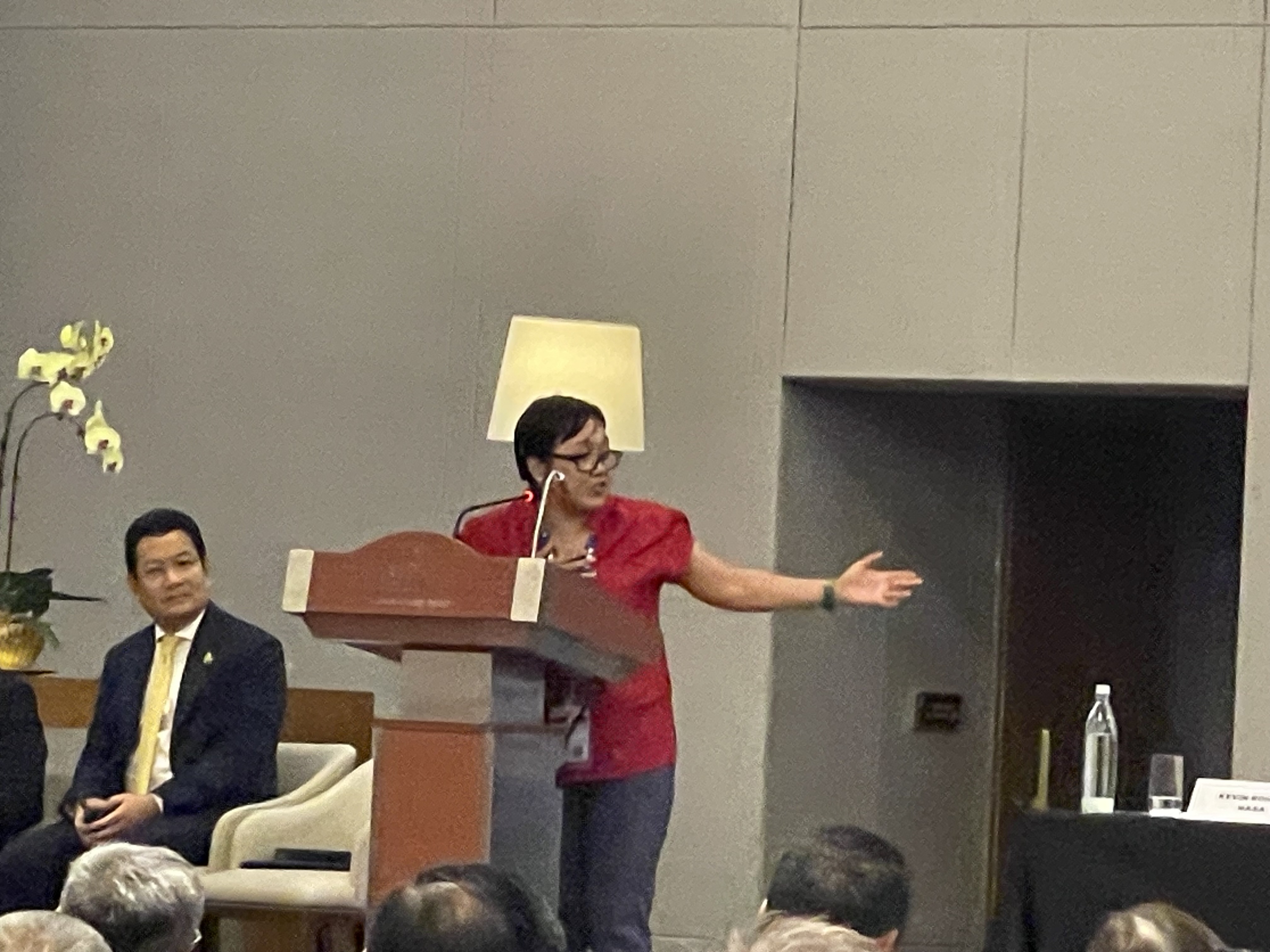100 per 100,000 Pinoys die annually due to air pollution— research scientist
By Jel Santos

Approximately 100 out of every 100,000 Filipinos die annually due to the effects of air pollution, a research scientist of the Manila Observatory disclosed on Thursday, Feb. 8.
Maria Obiminda L. Cambaliza, research scientist of the Manila Research Observatory, said such is the reason why the collaboration of the Department of Environment and Natural Resources (DENR) with the National Aeronautics and Space Administration (NASA) for air quality research is very crucial to address air pollution problem.
“Roughly about 7 million people die each year due to air pollution globally. A third of the figure is actually in Asia. In the Philippines, that’s about a hundred people per 100,000 people die each year due to air pollution,” she said during the press briefing of NASA’s Airborne and Satellite Investigation of Asian Air Quality (ASIA – AQ) in Clark, Pampanga.
In an ambush interview with reporters, Cambalisa said the transport sector is the “major contributor” of air pollution in the country due to traffic, causing at least 60 percent of air pollution.
“Sixty percent [of air pollution] is due to traffic… The rest are other sources. Some because of construction, some due to natural, like seas salt,” she noted.

In her speech, Environment Secretary Maria Antonia “Toni” Yulo-Loyzaga said that through the joint effort, dubbed as Airborne and Satellite Investigation of Asian Air Quality (ASIA-AQ), the Philippines can gain access to advanced air quality monitoring techniques, including satellite data and analysis, grounds-based observations that are enhanced, and atmospheric modelling tools.
“This can lead to improved monitoring capabilities, and allow for more accurate and comprehensive assessment of air pollution levels across the country,” she said.
“Timely and reliable air quality information can help Filipinos make informed decisions regarding their own health and their activities outdoors as well, and it can assist the government, especially local executives in the national government agencies, in implementing targeted evidence-informed interventions to address air pollution hotspots,” she added.
ASIA-AS includes international experts from NASA in the United States, Korea’s National Institute of Environmental Research (NIER), in South Korea, the DENR in the Philippines, and agencies in other Southeast Asian nations.

Loyzaga stressed that ASIA-AQ promotes collaboration among participating countries, including the sharing of research findings, data, and best practices related to air quality management.
“This can lead to a better understanding of transboundary air pollution and the sharing of effective strategies for reducing pollution. By participating in this collaboration, the Philippines can oh olearn from the experience of other countries in the region as well as the United States and contribute our expertise, but also learning from their own experience to enhance our own decision-making. This will lead to more efficient and comprehensive air quality management approaches,” she went on.
The collaboration, per the DENR chief, fortifies policies and decision- making, noting that research and data generated through ASIA-AQ can provide important support for policy development and decision-making processes related to air quality management in the Philippines.

“The project can help policymakers and government agencies gain access to advanced research findings and analysis, enabling evidence-informed policy-making and targeted interventions. This can lead to the strengthening of air quality regulations, as well as the legislations,” said Loyzaga.
PM 2.5 decreased but…
The Manila Observatory said the levels of PM 2.5, a fine particle found in smoke and haze, and can be directly emitted from sources such as forest fires or they can form when gases emitted from power plants, industries and vehicles react in the air, decreased after the DENR released an administrative order requiring the shift of motor vehicles from Euro 2 to Euro 4 standards.
In 2015, the agency issued DENR Administrative Order No. 2015-04 establishes more stringent emission standards for carbon monoxide (CO), hydrocarbon, oxides of nitrogen , and particulate matter that new passenger and light- and heavy-duty vehicles must meet.
“In the Manila Observatory, we have been monitoring PM 2.5 since year 2000, and I am happy to let you know that numbers are going down. In year 2020, 2021, we have seen annual numbers of 18 to 20 micro grams per cubic meters and that’s coming from a number of 60 to 50 micro grams per cubic meter in the mid 2000s. So, yes, it is really, really promising,” Cambaliza said.
“And this, we attribute to the very effective administrative orders from the DENR. So, for example, in 2015, the department administrative order from the DENR, which required everyone to shift from Euro 2 to Euro 4 standards. And at the Manila Observatory, we have seen a decline, a decrease, starting in 2017 and so I am grateful for that long-term measurements because then we are able to actually say for sure that department administrative orders actually work,” she went on.
However, the research scientist noted that, while recent PM 2.5 measurements have decreased to roughly 20 micrograms per cubic meter, this is still four times the World Health Organization's (WHO’s) yearly guideline threshold.
“Mahalaga dito na masabi natin (It is important to note) that's still four times the annual guideline value ng World Health Organization,” Cambaliza stressed.
NASA earlier announced that its DC-8 aircraft will be flying at low altitude from Feb. 5 to 14 as it embarks on air quality research in the metropolis and its surrounding regions. This came after Loyzaga bared that the Philippines will be part of an international collaboration with NASA to study and address air quality issues in the Asian region
The Space Agency plans to carry out four research flights over the Manila urban area.